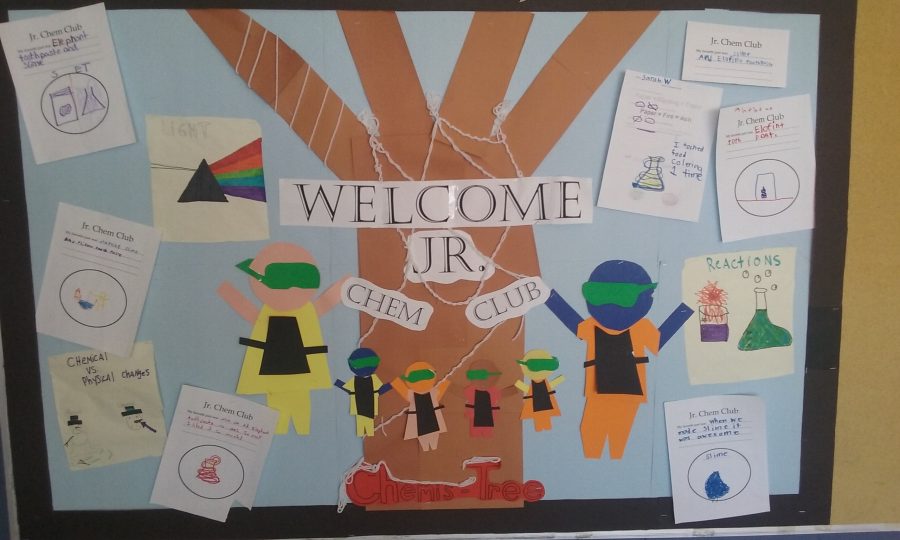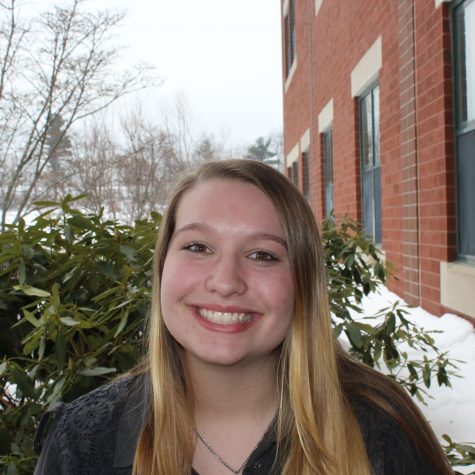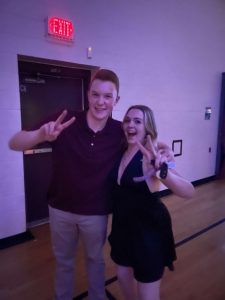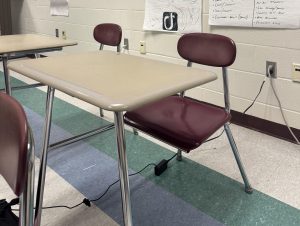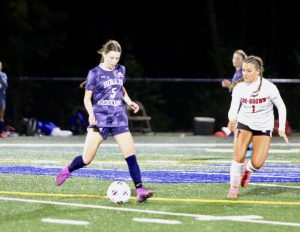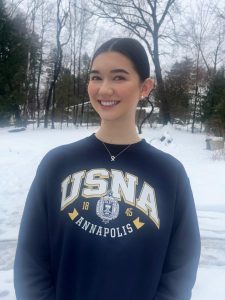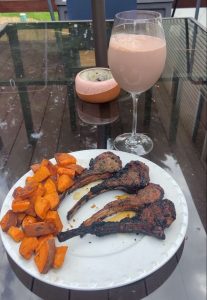Chemistry Club: more than just experimentation
The Chemistry Club board is always full of useful information!
April 4, 2017
One of HB’s most educational and enjoyable extracurricular activities is Chemistry Club. Established in Dec. 2010, the club meets after school from 2:30 to 4:30 p.m.Wednesdays and every other Friday in room 371.
Dr. Linda Saari, a former chemistry and physics teacher at HBHS, and Debbie Maloney, a current HB chemistry teacher, attended an American Chemistry Society (ACS) conference together during the summer of 2010. The ACS conference is held once a year, with teachers coming from all over the country to attend (they offer “Webinars” for teachers who can’t watch in person). After attending the conference, the two teachers had the idea to start a chemistry club here at the high school. With the urging of Saari and Maloney, a group of chemistry students founded the new club. Ever since, HB has been a thankful charter of ACS.
“The ACS is definitely a gift. They give school clubs lessons, labs and materials, to help further expand their Chemistry Clubs,” Maloney explained. “They don’t restrict or dictate lessons, but they send ideas.” The HB Chemistry Club, while running their own labs and meetings, also hosts the Junior Chem club, where they teach younger grades from the Hollis Primary School about chemistry.
The ACS sends teachers nationwide projects with creative names like “Elephant Toothpaste”and “Hydrophobic Sand,” to be used as fun experiments for the Junior Chem Club. In the “Hydrophobic Sand” experiment, club members put water in two trays of sand. One of the trays can be spun around without the sand dissolving in the water, while the other turns into a muddy beach. The class was then asked which sand is Hydrophobic, and which is Hydrophilic. Hydrophobic sand avoids water, and Hydrophilic sand absorbs it. Some of these labs, like when they create putty or do other experiments, allow kids to take a souvenir home after the meeting to play with. It also continues their interest in the science of chemistry.
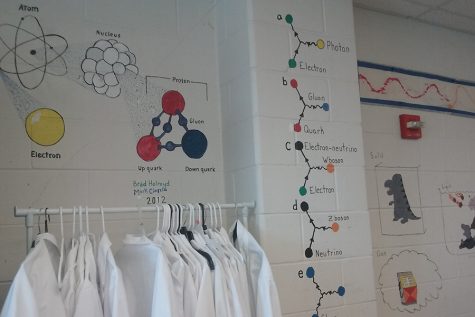
After a meeting well spent, the young chemists hang up their lab coats and head home.
Caitlin Ross ‘17, Meghan Mitchell ‘20 and James Surette ‘18 are some of the members that help out with Junior Chemistry Club. They taught 1st graders how to make “Elephant Toothpaste” at the club’s March 15 meeting, with hydrogen peroxide, potassium iodide and a little bit of dish soap. “It’s very fun to be able to interact with kids, interest and teach them,” Surette said.
Another such meeting this year taught the kids about light. Holly Maloney ‘19, an active member of both Junior and high school Chemistry Club, teaches the lessons on light, which consist mostly of showing the kids how black lights work and how light is colored. The kids learn that light is energy, and even light that seems white splits into a rainbow when they put on the lab’s light glasses. The young chemists are also given the chance to wash their hands with Flinn Scientific Inc. Glowing Germ Fluorescent Hand Lotion, allowing them to see what areas of their hands they missed when they washed their hands under the lab blacklight.
The Junior Chemistry club is easy to join and is advertised at the Hollis Primary School. There is a small $5 fee to join the club, which funds supplies and helps with the ability to keep experimenting and learning. If interested, speak with Maloney or any club advisor.
*Editor’s Note: This article has been changed to fix an error involving the “Elephant Slime” experiment. We are sorry for any confusion.



